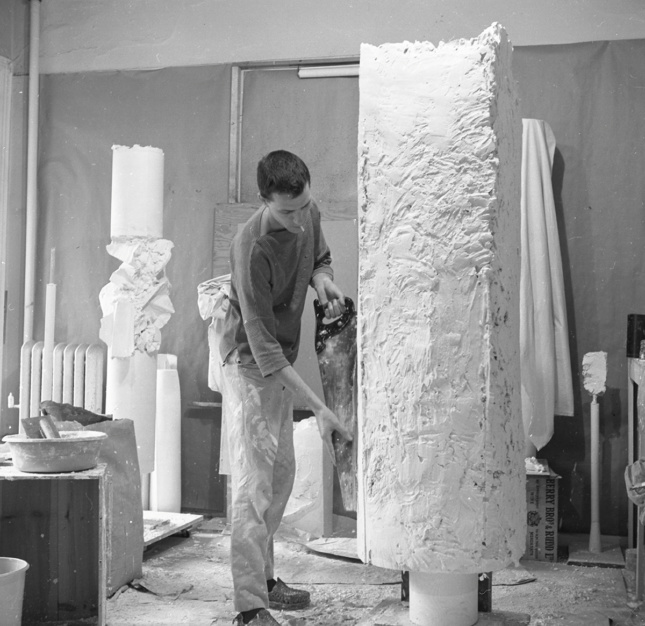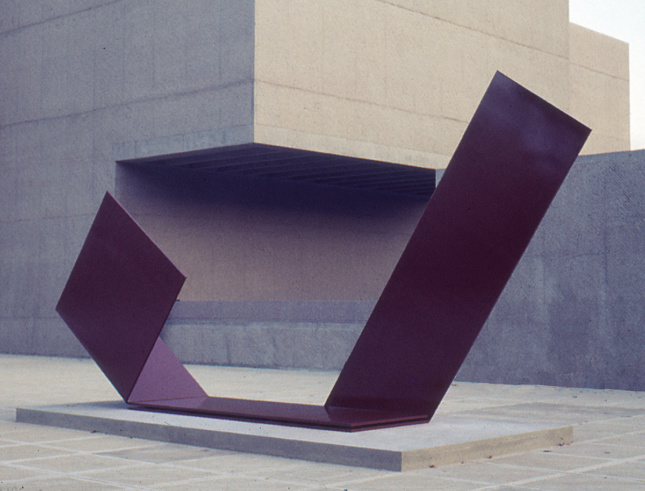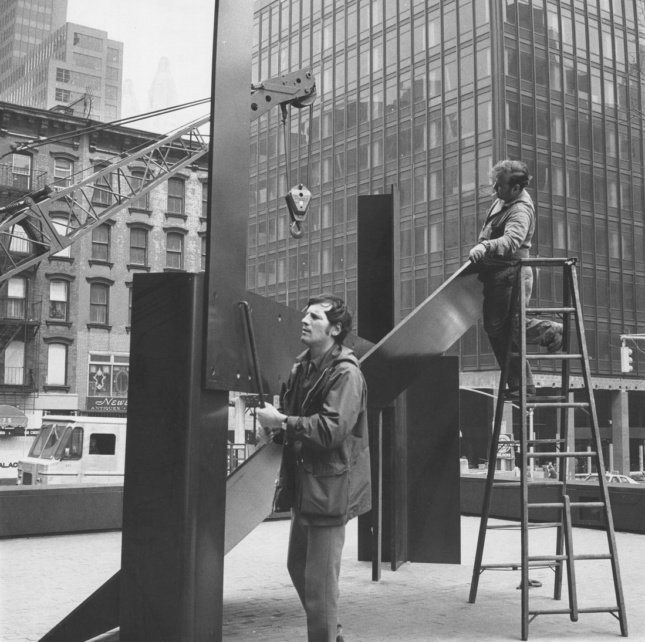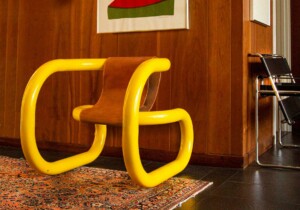Robert Murray: Sculpture
Design Books
$65.00 List Price
Some sculptors have to think like architects. They need to consider the actual weight of a work and whether it might wind up crashing through a floor or compromising a foundation. There are the issues of balance and whether something weighing a few tons and defined by curves and cantilevers will remain in place on its own or roll off its plinth. There are also the concerns about the best angles from which to view a finished sculpture and how it will age, especially if positioned outdoors. And once it is erected and set in place, what about the resulting shadows or reflective light?
As Jonathan Lippincott, the noted book designer and independent art curator, reveals in his new book, Robert Murray: Sculpture (Design Books), the first such monograph to chronicle the artist’s oeuvre, Murray learned about weight and scale through practice. When Murray first began making some of his large-scale works in his apartment on East 22nd Street in Manhattan in the early 1960s, they were so heavy and tall that they compromised the very structure of the building.

Of one such early work, Ceres, a seven-foot-high plaster sculpture, Murray said: “I had it right in the middle of the room, and I put supports out from underneath the bottom lip of it to try to distribute the weight, but it didn’t quite work. One day there was a pounding on the door and a very nice couple from downstairs demanded to see what I was up to, and I guess my floor sagged so badly that their ceiling cracked and plaster was raining down in their living room.”
The comment from Murray is one of many in Lippincott’s book that reveals the artist’s sense of humor, a characteristic much welcomed in an otherwise scholarly art book. Lippincott has obviously been careful to reveal—and revel in —Murray’s playfulness. As a result, this may be among the most refreshing and entertaining books to read about any sculptor, living or not.
Lippincott’s book also manages to right an aesthetic wrong. While fantastically prolific and influential, Murray doesn’t seem to have won quite the same name recognition of some his contemporaries, like David Smith, Tony Rosenthal, Louise Nevelson, and Barnett Newman. Lippincott’s book will surely reintroduce and re-establish the still-active Murray as one of the very best practitioners of contemporary sculpture. And the book’s examples of Murray’s candor and wit will only heighten the artist’s appeal. As Murray recounts about his early days as a young artist from Saskatoon suddenly immersed in the New York art world: “I always joke that it’s lucky my liver was as young as it was when I got to New York or I would have been dead a long time ago.”
Although Lippincott’s monograph is visually-driven, it includes an engaging, lengthy biographical text about Murray, as well as a candid, chatty question and answer between the author and his subject. The two appear to have forged an affectionate rapport. We learn about Murray’s Canadian boyhood, his inspirations for the monumental works of art, and the process of making those sculptures (some sixty of which were made at Lippincott, Inc., the Connecticut-based fabricator of monumental works of sculpture, founded by the author’s father). But what resonates throughout the book is Murray’s collaborations with and respect for architects.

There was a time not so long ago when art and architecture were more closely aligned. Lippincott describes, for instance, the Percent for Art program that flourished in the U.S. and Canada in the mid-1960s, whereby, according to the author, “one percent of the budget for any new building would be dedicated to purchasing artwork…an unprecedented amount of funding to purchase and commission artwork for government buildings and public spaces.” Murray’s large-scale abstract (some would say minimalist) sculptures were coveted by architects of the time. I.M. Pei, for instance, commissioned Murray for a massive work (Shawanaga) to occupy the plaza of Pei’s Everson Museum of Art in Syracuse. For a 1968 group show of sculptures at the then-new Boston City Hall, a Brutalist edifice designed by Kallmann, McKinnell, and Knowles, Murray was invited to include what is now one of his iconic works, Windhover. “The only bad part of it all was the new city hall, which wasn’t a very attractive backdrop,” he told Lippincott. “But it was a nice plaza, a good space, and that show got a lot of attention.”
Murray’s relationship with architects and architecture began early. In 1958, at the very start of his career, he received a commission from a local Saskatoon architect to fashion murals composed of mosaic tiles for a new government building. Barnett Newman collaborated with Murray to create an imagined, or conceptual, synagogue that Newman described as being “organized like a baseball diamond, the rabbi on the pitcher’s mound, the men in the dugouts, and the women in the bleachers.” Murray designed two models for the project, one of which was exhibited at a show at the Jewish Museum in 1963 organized by Richard Meier. And in his native country, the Royal Architectural Institute of Canada awarded him their Allied Arts Medal in 1977. As Lippincott emphasizes, “The award recognizes artists or designers in Canada who create work intended to be integrated with architecture, and Murray was one of the first artists to receive this award for contemporary sculpture.”

Both Lippincott and Murray are adept at describing the architectural aspects of the sculptures. Of Murray’s Breaker (1965), Lippincott lovingly relates the structural issues in such a way that the piece can almost be envisioned without seeing it: “[Breaker] consists of two arcs that are almost identical; one extends beyond the other, providing a point of contact with the floor, adding stability to the work and extending its energy.”
Because of this book, Murray reputation as a great sculptor will endure. That reputation rests particularly on his public artworks, many of which are positioned with notable works of architecture. But as Murray said to Lippincott, “Until the public starts making it, it’s not public art, it’s private art put out into public situations.” With Lippincott’s fine book, we now have the definitive visual and chronological map for finding Murray’s works and enjoying them in public settings.
Murray can be experienced in person on April 7 at the David Richard Gallery, 211 East 121st Street, New York. The gallery will present a solo exhibition of Murray’s large sculptures and two-dimensional artworks, with an opening reception on April 7 at which both Murray and Lippincott will be present. The show runs through May 5.











